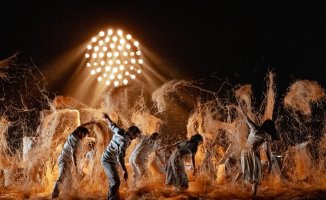From the Born Cultural Center in 2013, inaugurated by Mayor Trias, the old central market of Barcelona became the Center for Culture and Memory with Mayoress Colau. Now, with Jaume Collboni at the head of the municipal government, the orientation of this emblematic space is changing again. The new name will not be known until September, but the Councilor for Culture of Barcelona, Xavier Marcé, is confident that, with the new approach, the definitive use of this space will be drawn up.
At the outset, El Born is integrated into the network of facilities of the Barcelona History Museum (Muhba), "to explain the modern and contemporary history of the city", declares Marcé. Joan Roca i Albert, who has led the museum teams, says: "I don't know what homeopathy is about in medicine, but it is in culture: everything must be done with great respect, in a careful and participatory process ".
For Roca, this remodeling starts from an idea: "To explain the history of Barcelona, Catalonia and Europe, with the good moments and the catastrophic moments". And for this he makes some points, such as liberal revolutions, colonialism, the labor movement, urbanism or industrialization: "Many cities tried to carry out their industrial revolution and did not succeed; Barcelona, yes".
"El Born does not change the story, but zooms in and expands the references - continues Roca-. We want to explain how Europe goes from the Middle Ages to modernity with all the yous and uts". And he adds: "El Born is European, it's Catalan, it's from Barcelona, it's a project that can make us great".
The new tour will start on the right and, from room to room, it will address: 1. Europa urbes, 1500-2000, the evolution of cities during the last five hundred years; 2. Barcelona 1700, the guild city, when the Catalan capital experienced a commercial boom; 3. The Ribera neighborhood and 1714, with the descent into the ruins of the siege of Barcelona in the War of Succession; 4. Ciutadella and Mercat del Born: a new urban center, 1871, returning to the street plan, to discover the urbanization of this part of the city; and 5. Barcelona 1900, the manufacturing city, which is approaching industrialization, thanks above all to the textile sector. The space is completed with a school museum, which will have a toy library for the rogue to play with elements from this historical period; and the Àgora Born event hall.
Marcé insists: "The memory programs will continue to exist, we have not reduced any of their budgets. There is no municipal will to end memory policies, but to give them these new objectives. We hope to be able to hold an official inauguration for Santa Eulàlia next year". The project has a budget of 1.7 million over three years. And he concludes: "There is a good consensus around this transformation".













